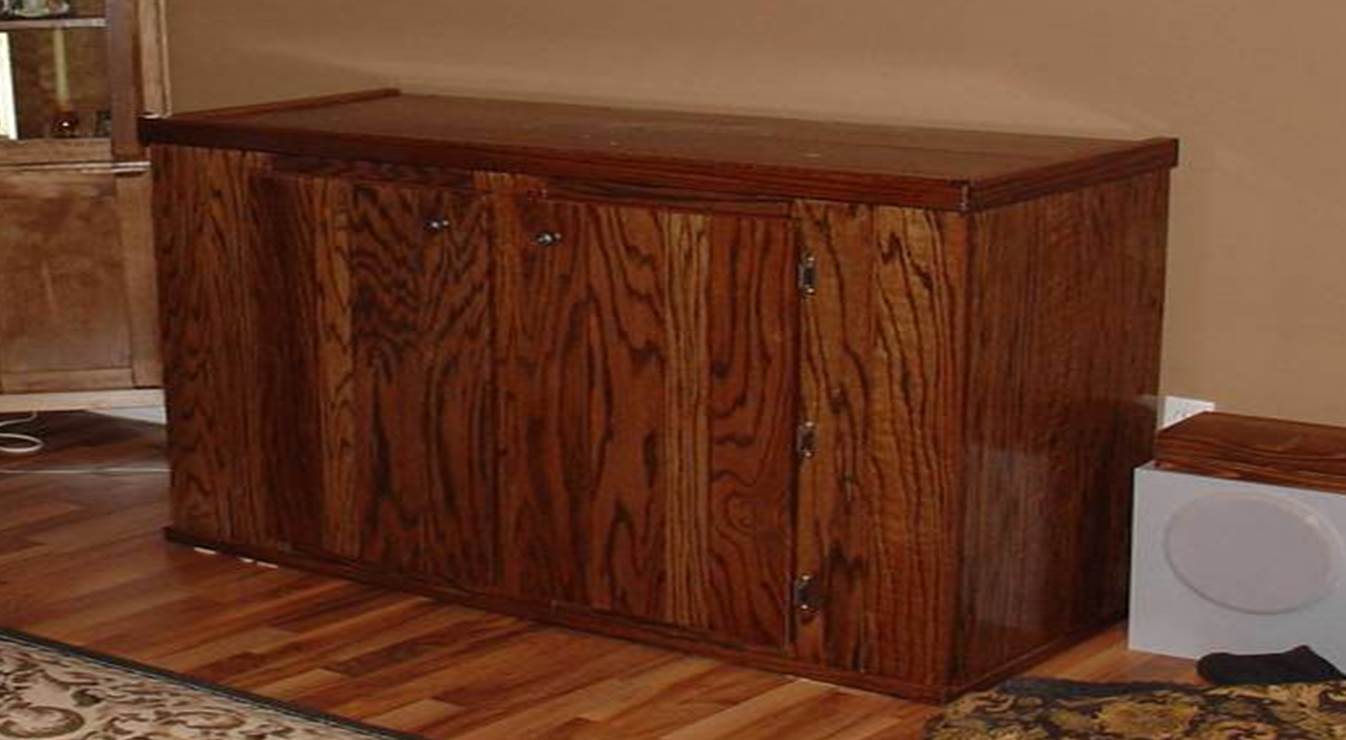
Building a Aquarium Stand
Many hobbyists who are also handy with do it yourself projects will build their own aquarium stands allowing for the exact features, measurements, and overall look they want.
I have always built my stands so I could get a larger sump as well as better internal height for more skimmer options. Below are a few aquarium stands that I have built over the years. If you are somewhat handy at wood working and wood finishing, this should be an easy project for you.
Just a few key things to remember
1 – Make sure the complete edge of the aquarium is supported by the frame of the stand.
2 – Make sure there is direct wood to wood contact from the floor directly straight up to the aquarium.
3 – Assemble the frame together using wood screws and wood glue.
4 – Assemble your stand frame on flooring that you know is level and flat.
5 – Always place a peace of ½ to 1 inch thick rigid foam between the aquarium and the stand.
6 – Carefully plan the height of your stand so you can fit all the equipment inside the stand that you may want.
7- Double check the size / opening for the doors to make sure all the equipment you are planning to up in the stand will fit through the doors.
8- Use the below examples and links at the end of this article to help you plan how to build your tank to ensure it can hold the weight of your full aquarium
As these stands need to hold a lot of weight and must be safe, I do tend to over build them at least a little.
My First Example
The below stand is one that I built for a four foot long 120 gallon aquarium. As I wanted to use a 4 foot long 55 gallon aquarium for the sump, I had to make the stand a few inches longer than four feet. That is why when you look at the below picture of the frame, it will look like it was double framed at both ends.
This is a picture of the frame I built with 2 X 4 peace’s of pine lumber. There were glued together with construction adhesive and screwed with 2 ½ inch construction screws. This is a good example to show what I am referring to when I say direct wood to wood contact from the aquarium frame directly straight down to the floor.
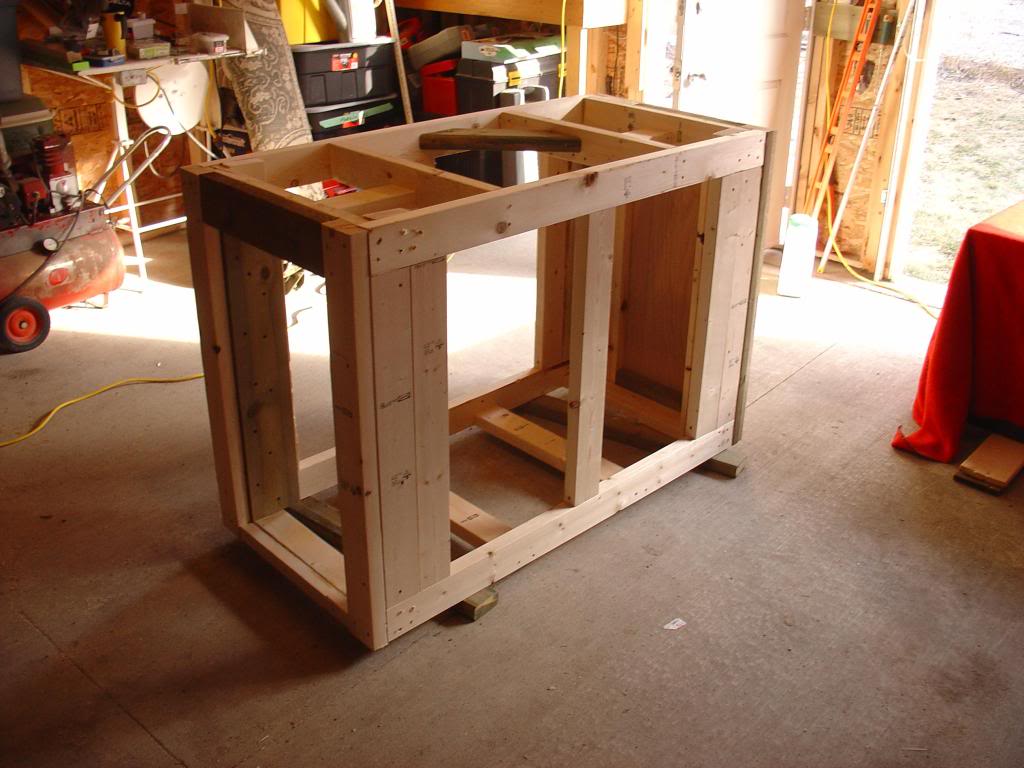
My next step was to cover the frame I made. As I wanted this aquarium stand to match the flooring in the room it was going to sit in, I wanted to cover the frame in ¾ oak. I cut the wood to fit and glued and nailed it to the frame. You can see the openings that I left in the front of the stand for doors to access the sump. The opening on the left hand side is to allow me to remove the sump easily without having to take the tank off the stand. There will also be a door for this end of the stand as well. I left the back of the stand open to allow for greater room when plumbing the sump to the aquarium. I also added some trim to the stand and stained it to match the rest of the furniture in the room it will sit in.
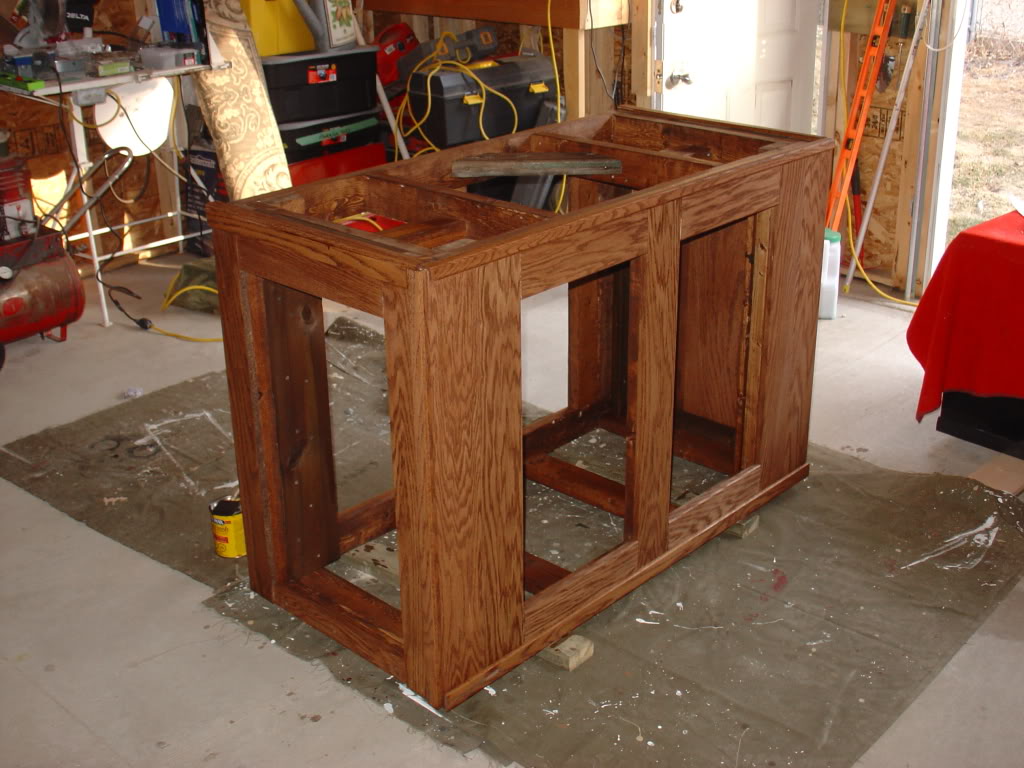
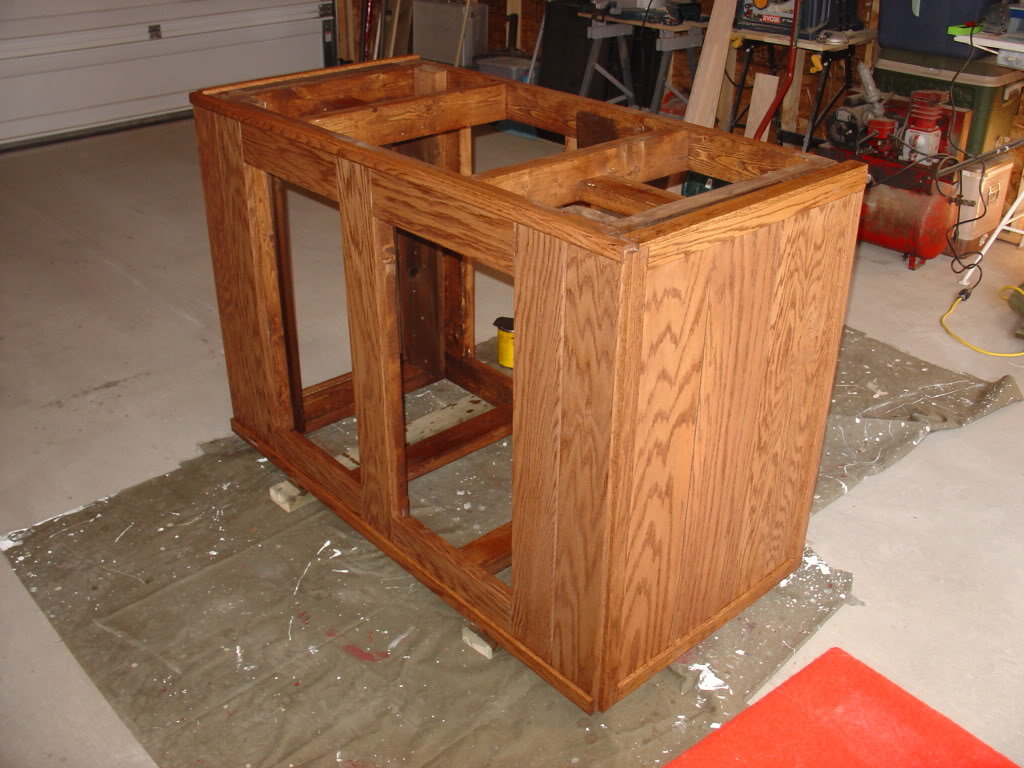
Next I built the all three doors out of the same oak and stained them as well. The whole stand also got 6 coats of the best quality urethane that I could use indoors. I wanted to make sure the wood will be as best protected from moisture that it can be.
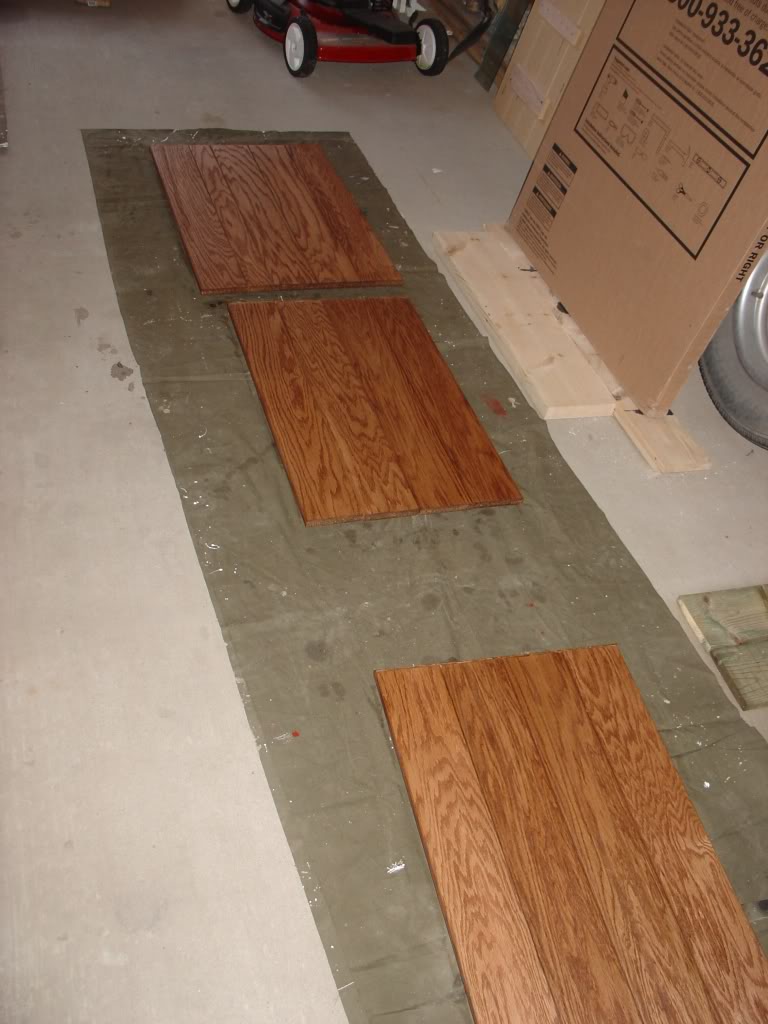
Next I moved the stand into place and set-up the entire system.
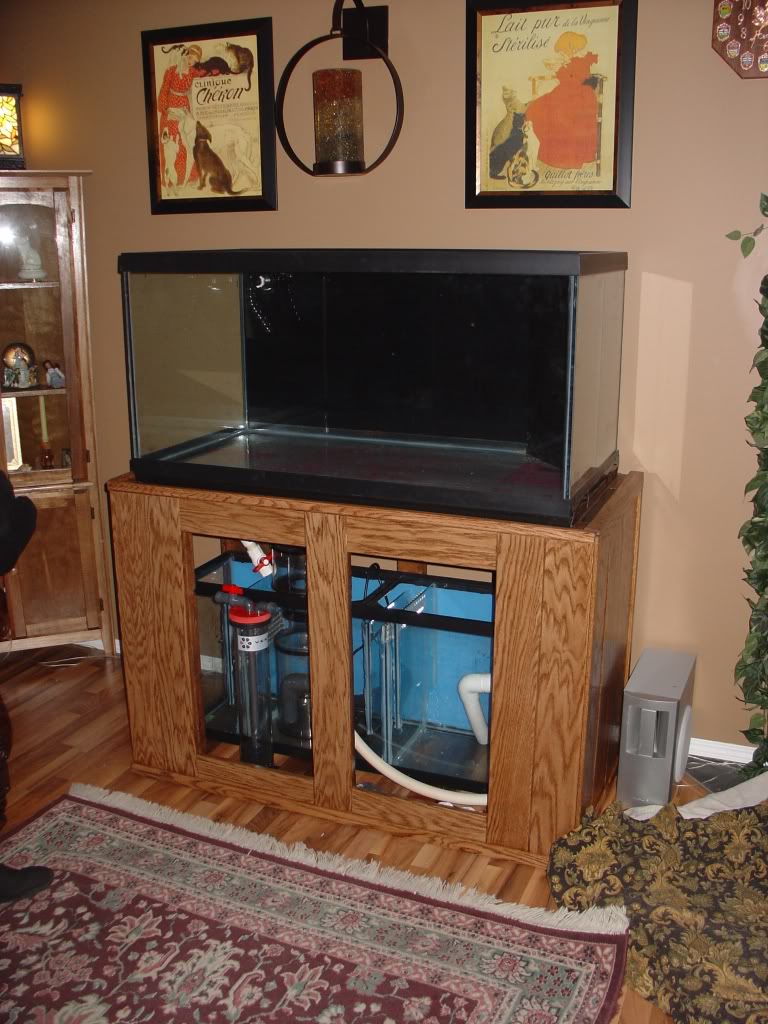
Once all plumbed and tested, I put the doors on and started to enjoy the aquarium. That stand has now been in use for over two years and has been standing up to the ~1,400 lbs sitting on it as well as the moisture.
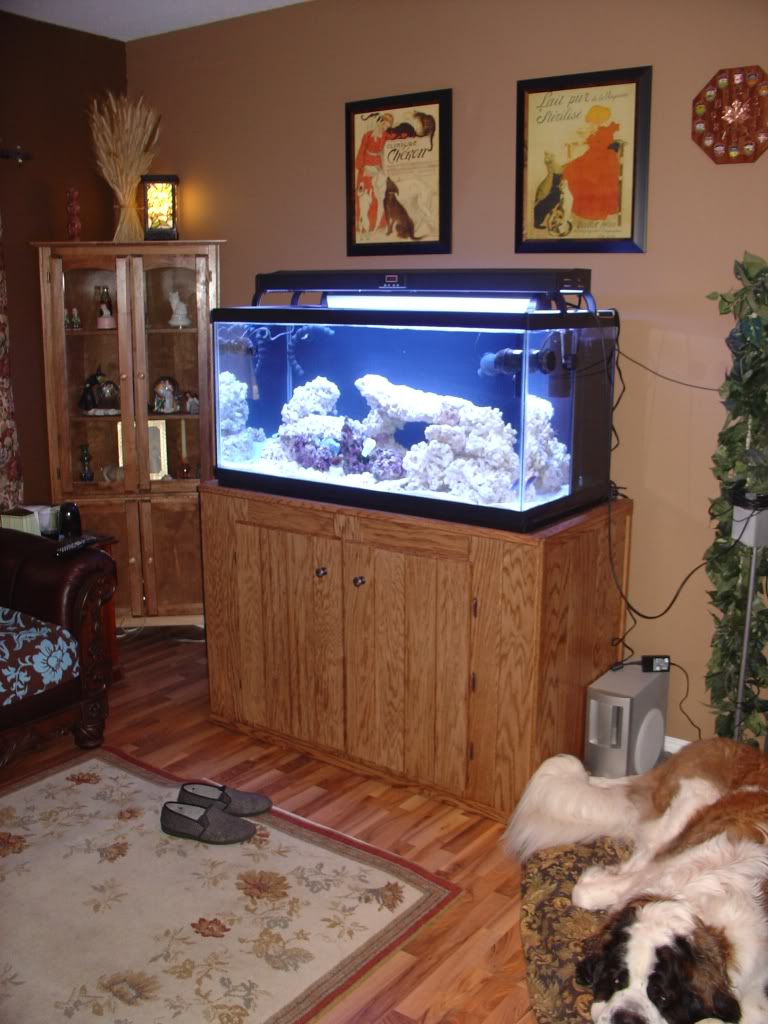
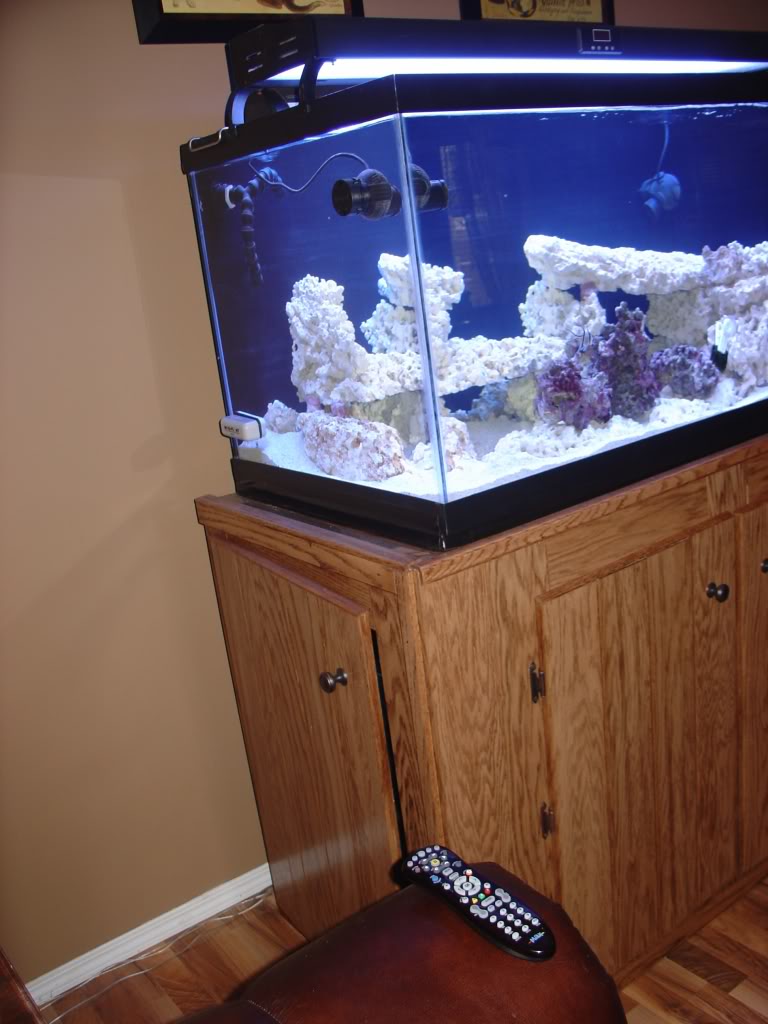
I also built a stand for a fresh water sump-less set-up in almost the same way as this first example above. Below are a few pictures of that stand. The biggest difference on the below stand is that I made a solid wood top out of 3/4 inch plywood.
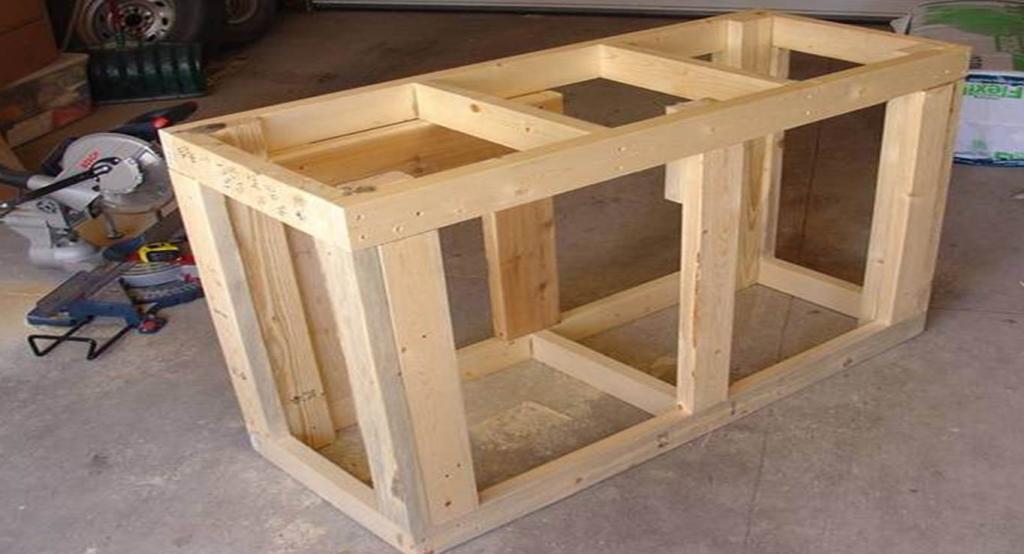
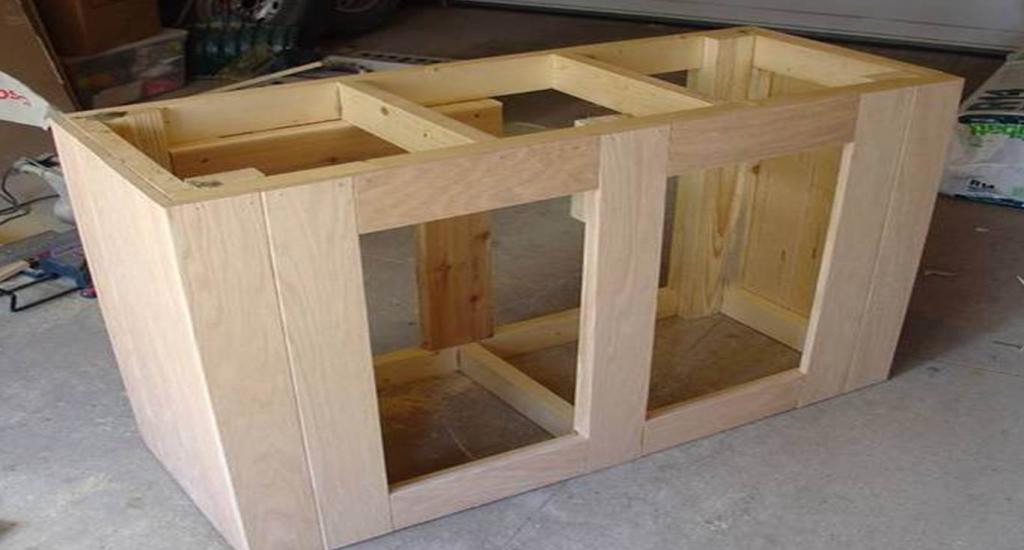
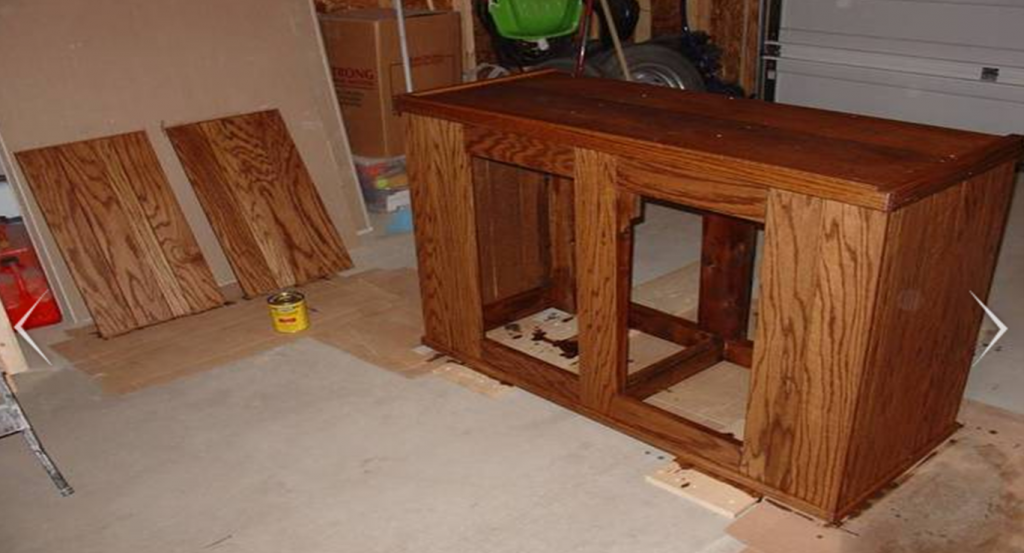
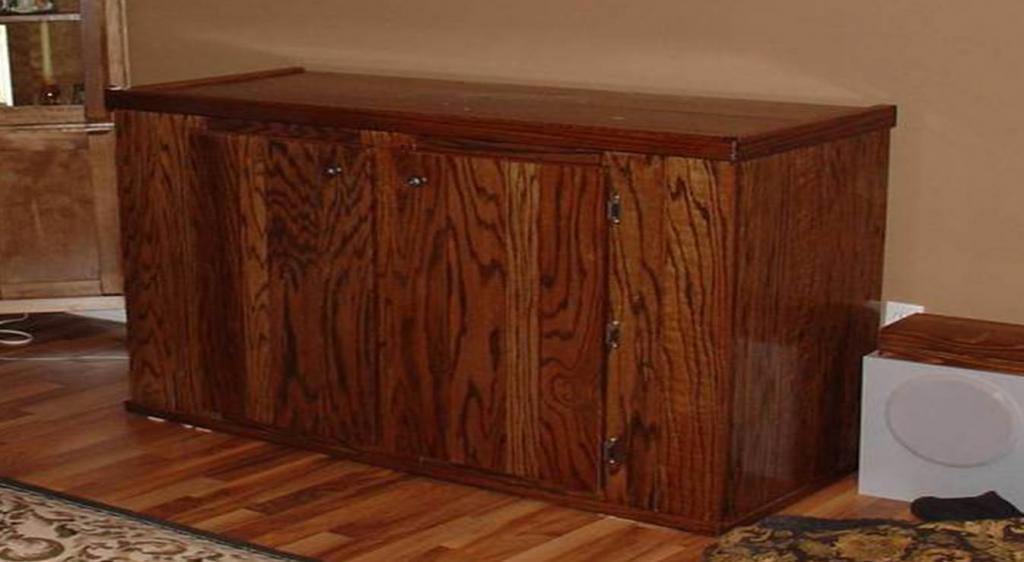
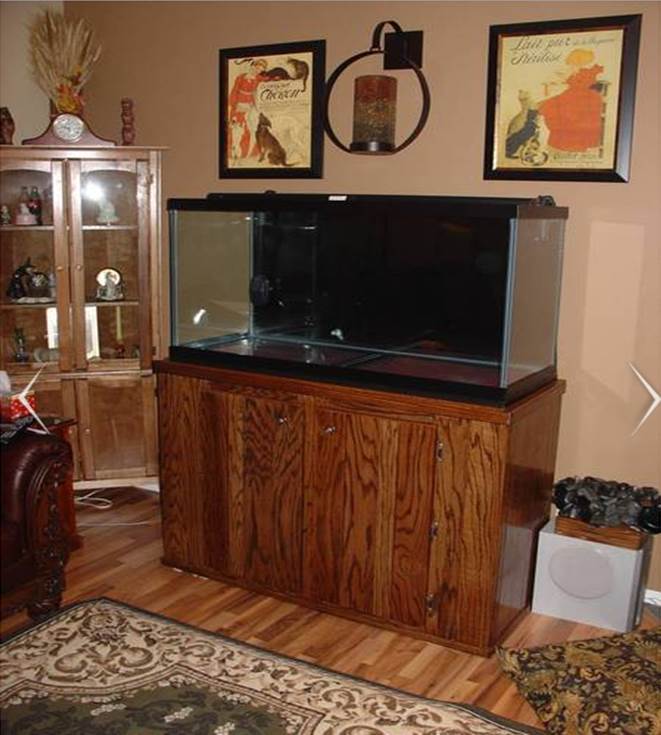
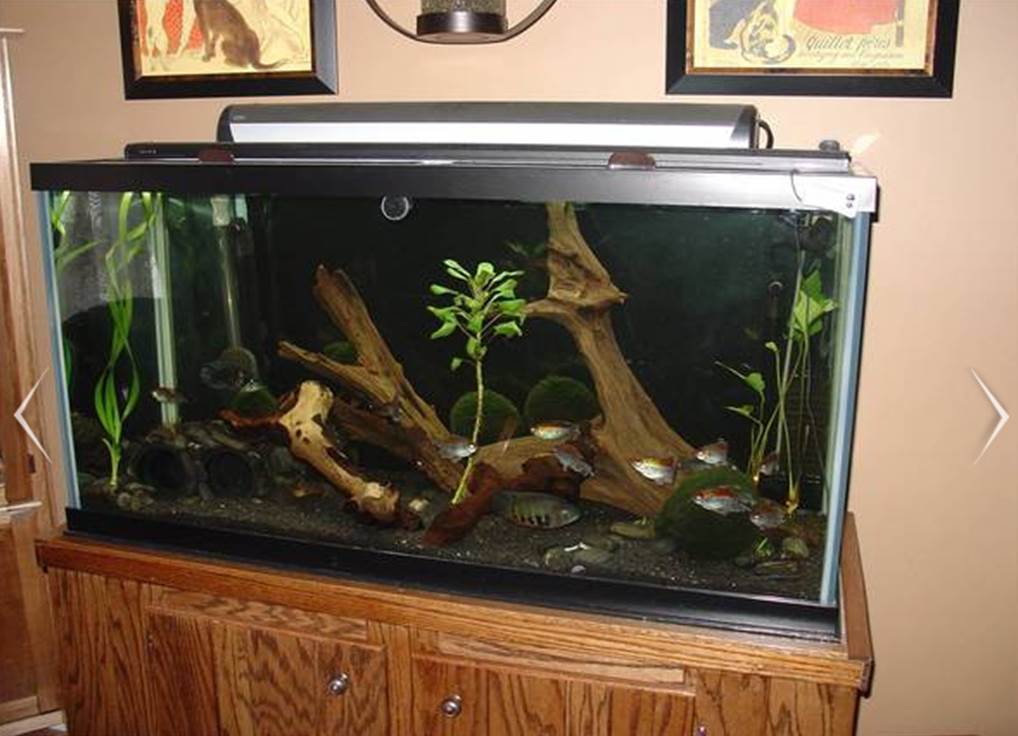
I also used that same design for a stand I built for a older 36 gallon Hagen aquarium that I had a few years back.
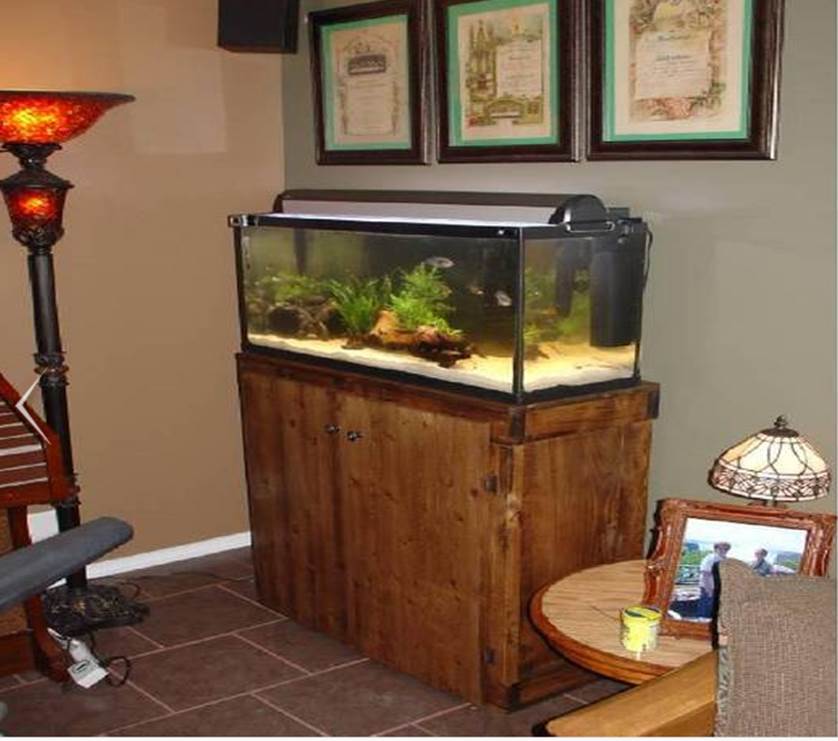
As well as using the same stand design for a 33 gallon set-up I put together for my father.
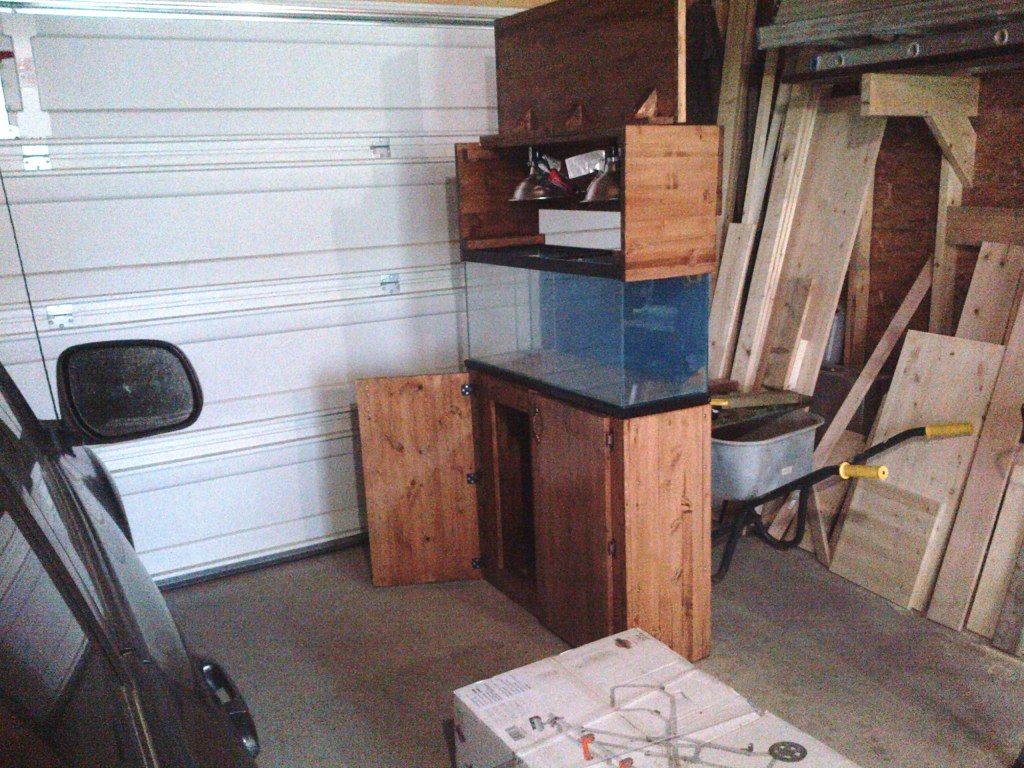
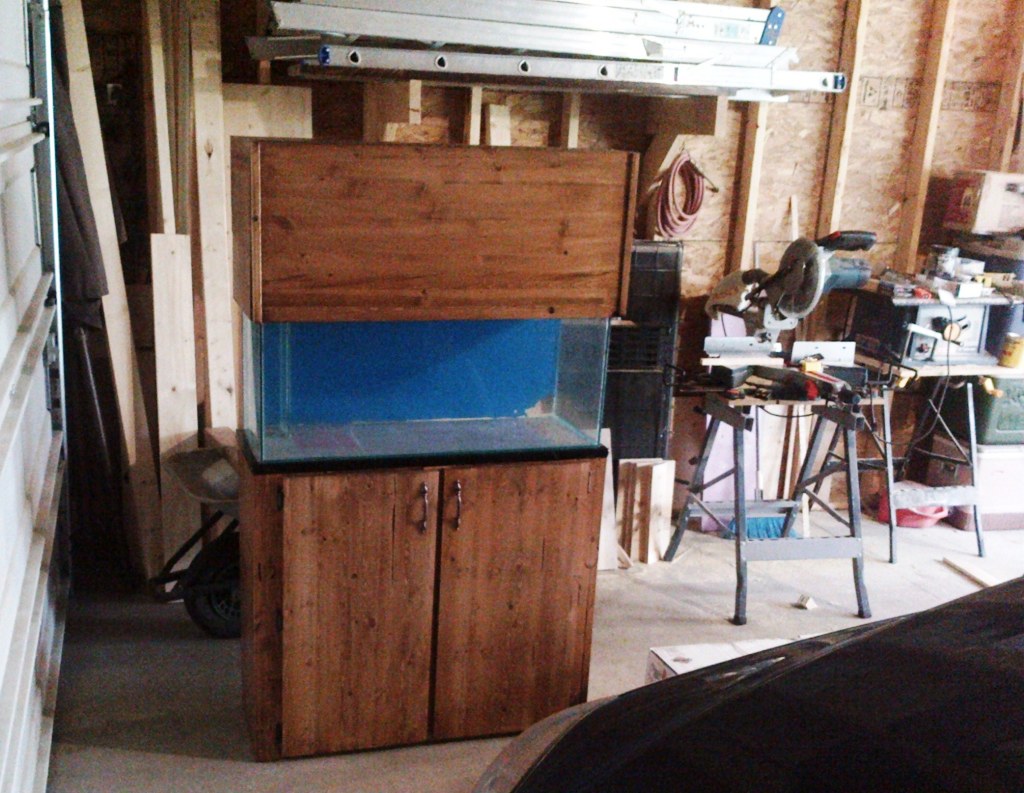
My Second Example
I took a little different approach for my 180 gallon aquarium stand. I doubled up the 2X4s for extra strength. As my sump for this aquarium was going to be in another room, I had no internal height goals to meet, nor did I even need any doors.
The below picture shows the basic frame that I had built. I even added some cross bracing on the up rights along the back and sides of the stand to re enforce the stability.
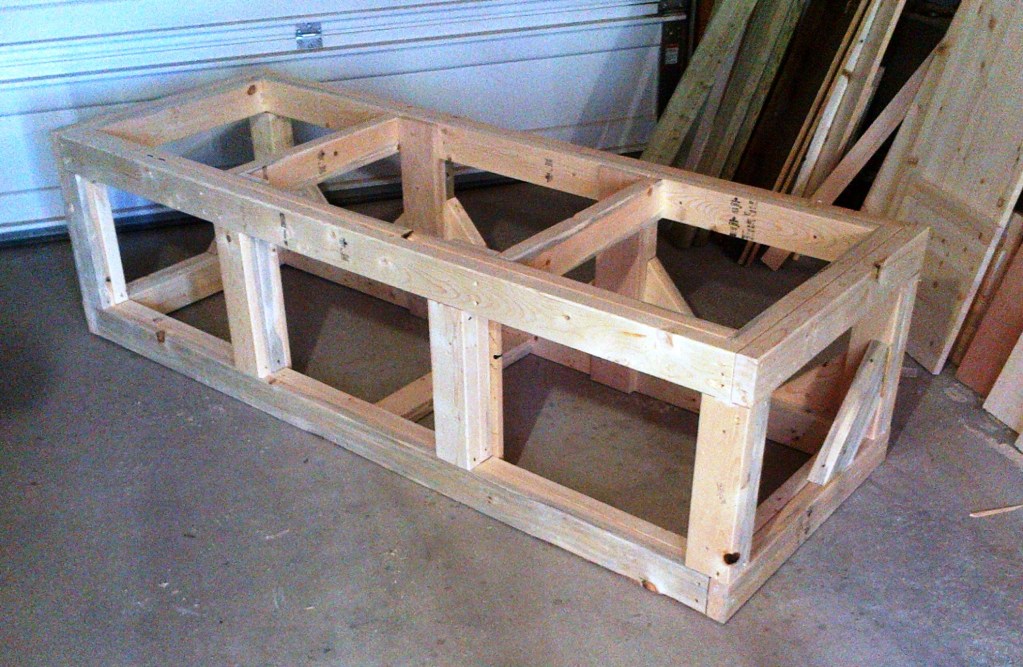
Next I had to use wood filler on all of the screw holes followed by a lot of sanding. Once sanded, 2 coats of primer and 5 coats of paint were applied before the stand was ready. You can even see the peace of rigid styrofoam on the stand for the tank to sit on.
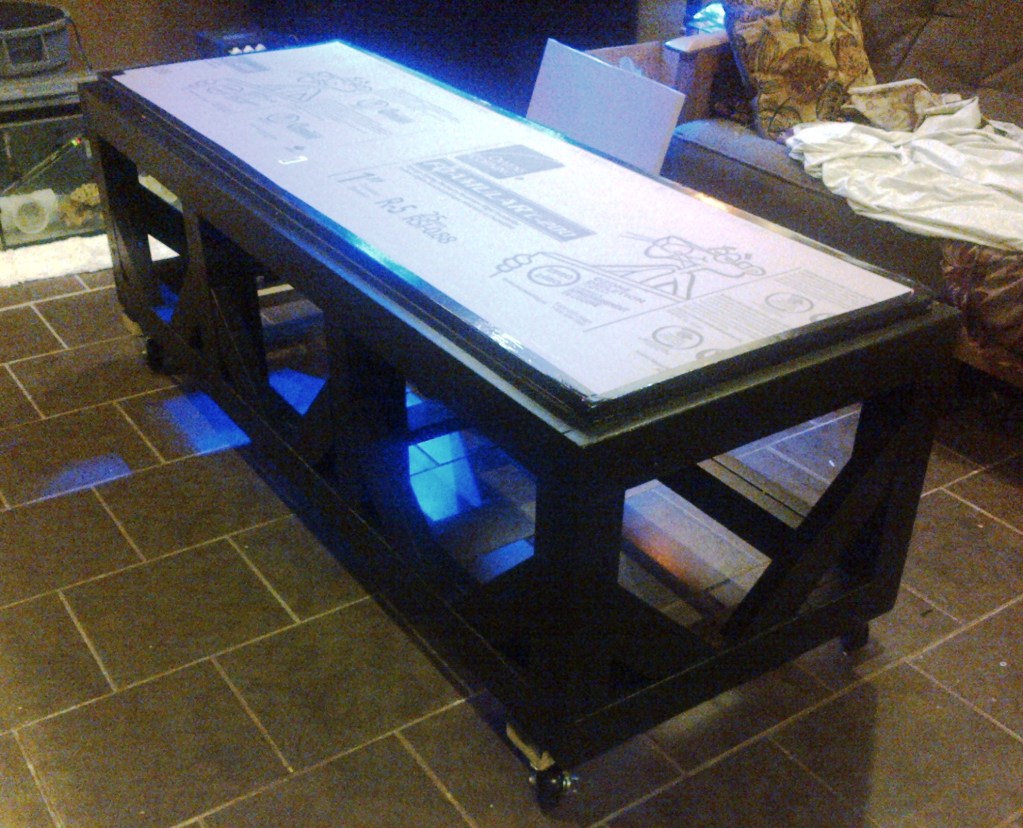
I then placed the aquarium on the stand, moved it in place, and attached the wood and cloth covers to the openings in the stand. This gave me the look I was wanting. This stand has now been in use for well over a year now and has been able to handle the ~2,200lbs of weight that is sitting on it.
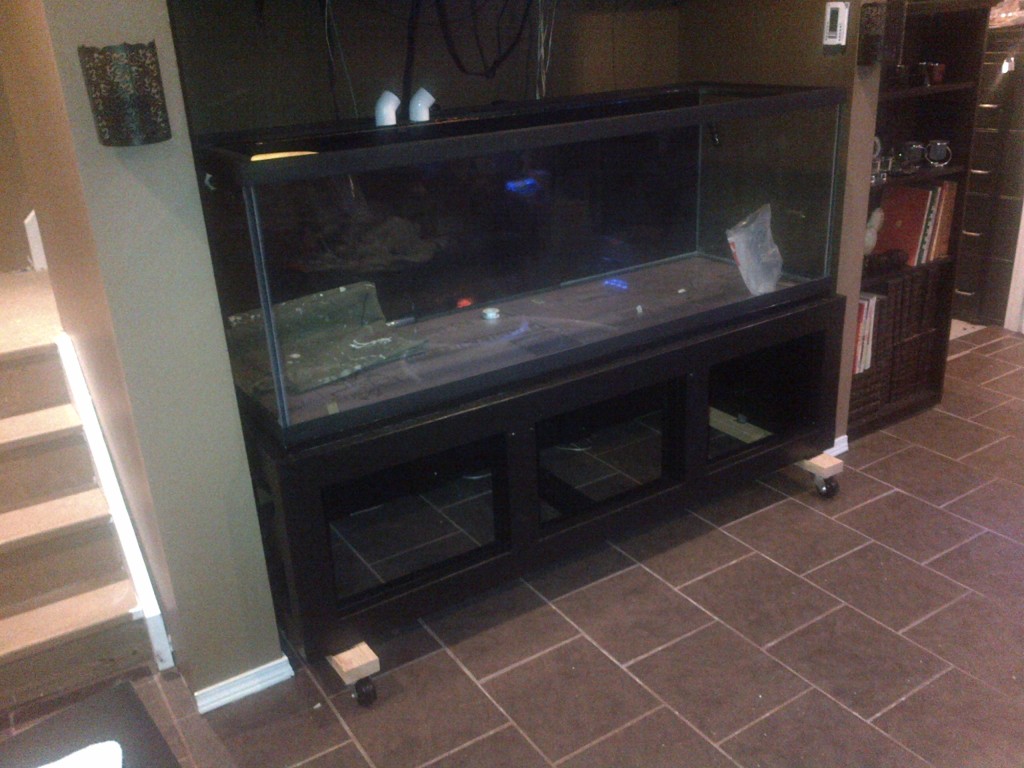
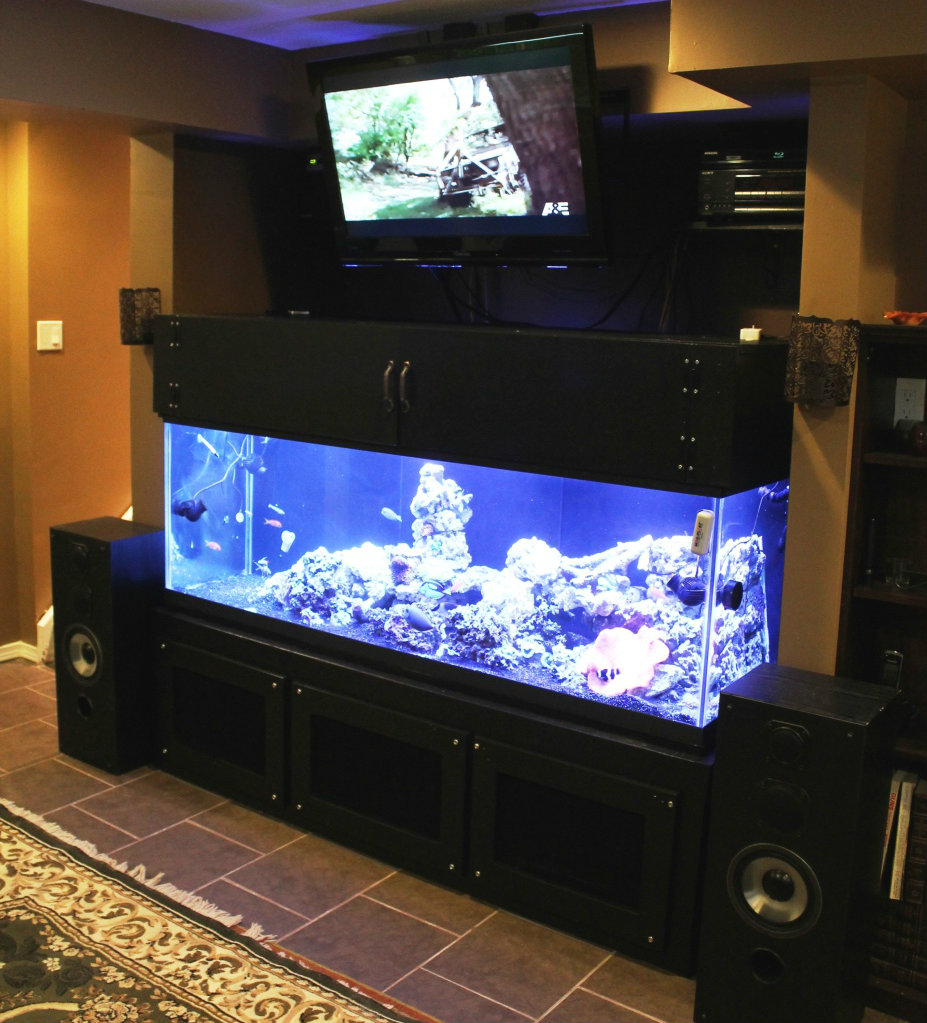
My Third Example
I ran into a very odd challenge with setting up a four foot long, 120 gallon aquarium in our basement. Due to two tight corners, I was limited to the size of stand that I could safety fit through these corners. The problem that I had was that a stand with the required height and width for my sump and skimmer would not fit around those corners. With the hight of the stand being taller than the hight of the aquarium, I could safely move the aquarium down the stairs but not the stand. After giving this a lot of thought, I decided to build a two peace stand that will be held together by a top brace. This would allow me to move the stand down my stairs in two peaces.
I started off by framing each half of the stand. These next two pictures are of the framing. The back of the stand is facing the car in the picture.
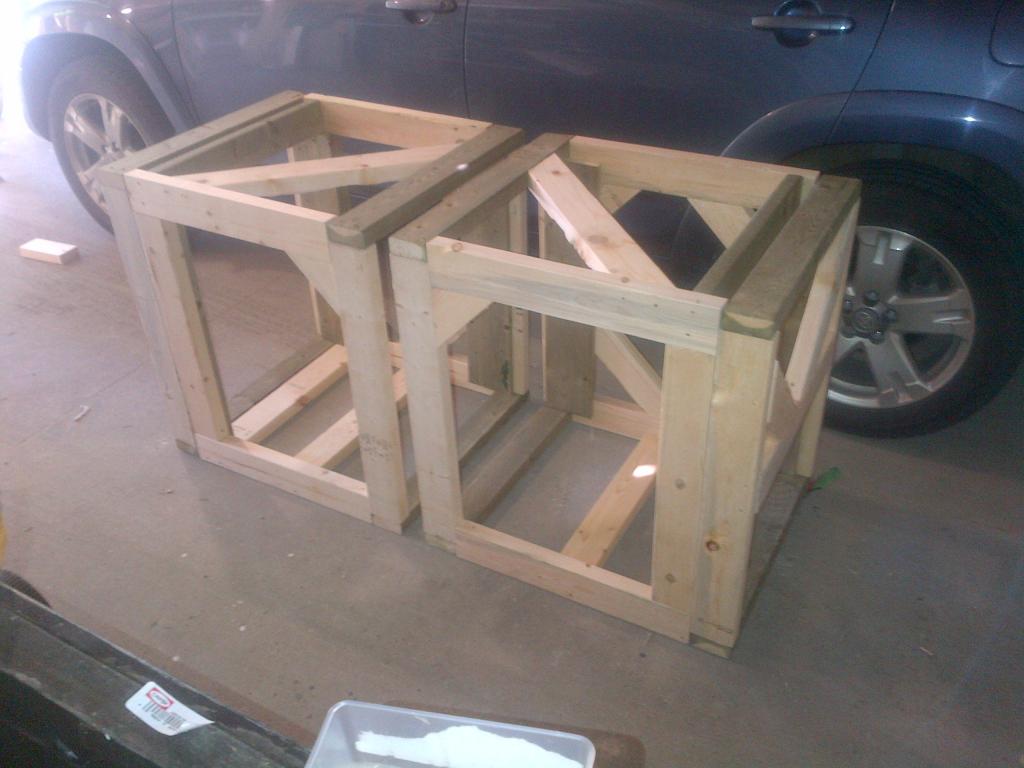
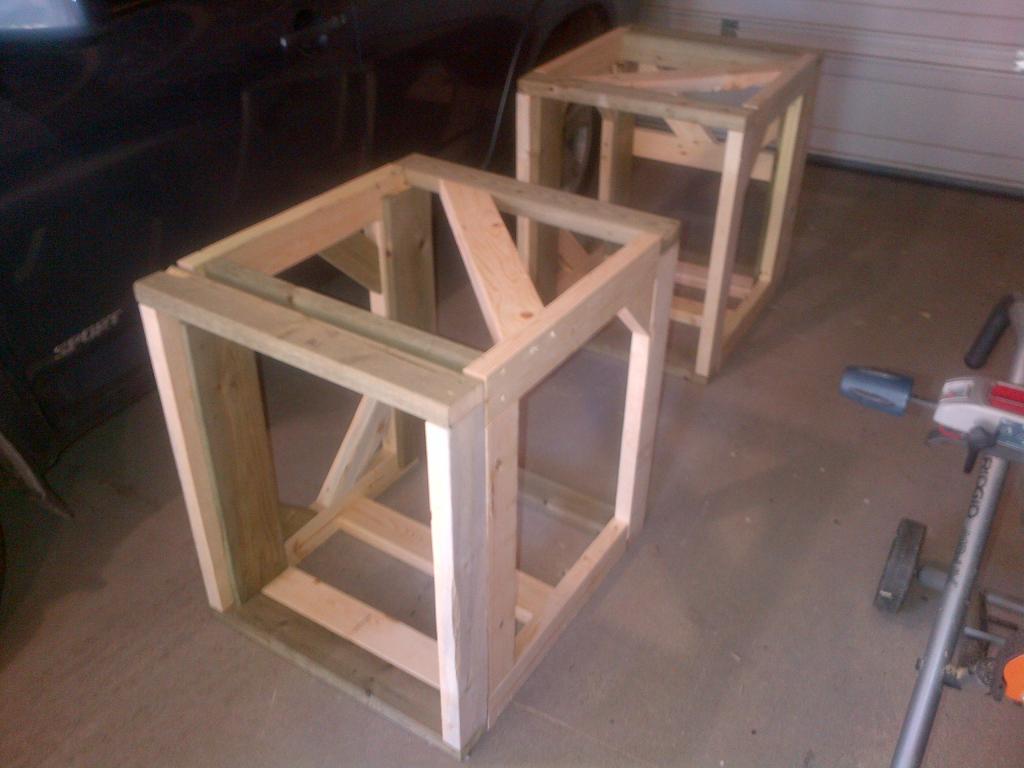
The next two are pictures are of the stand after I sheeted it in pine. As I want this stand to have a black finish, I use paint-able wood filler on all the hole and knots in the wood. The opening on the left hand side of the stand is for a large door to remove the sump if I ever need to.
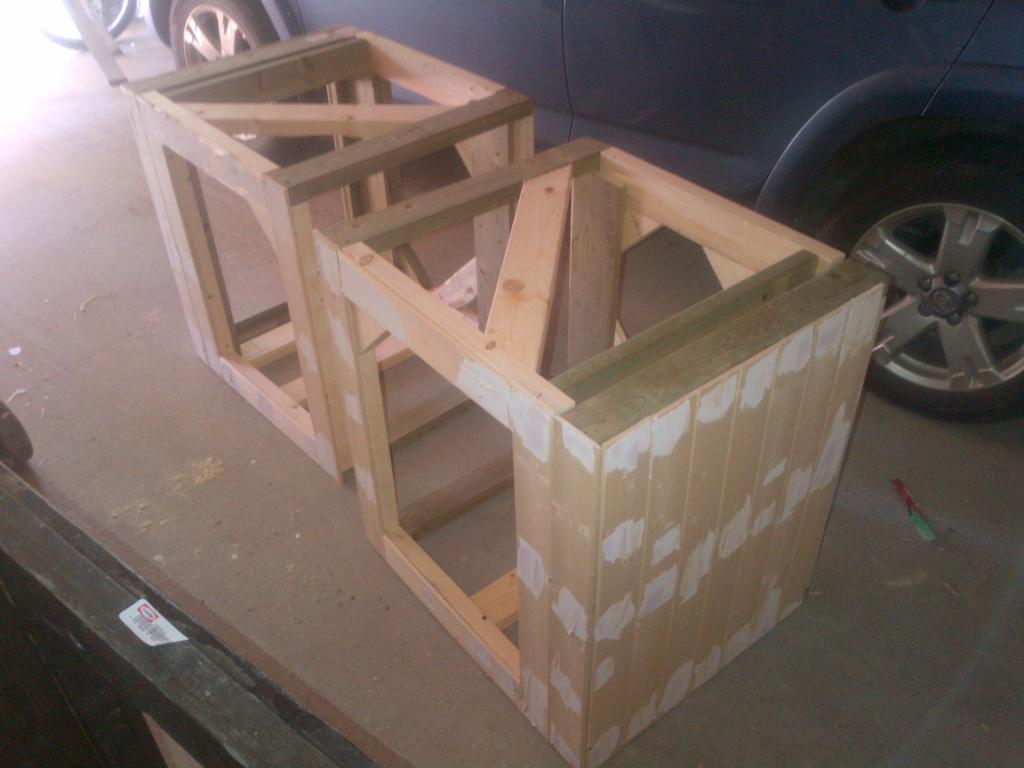
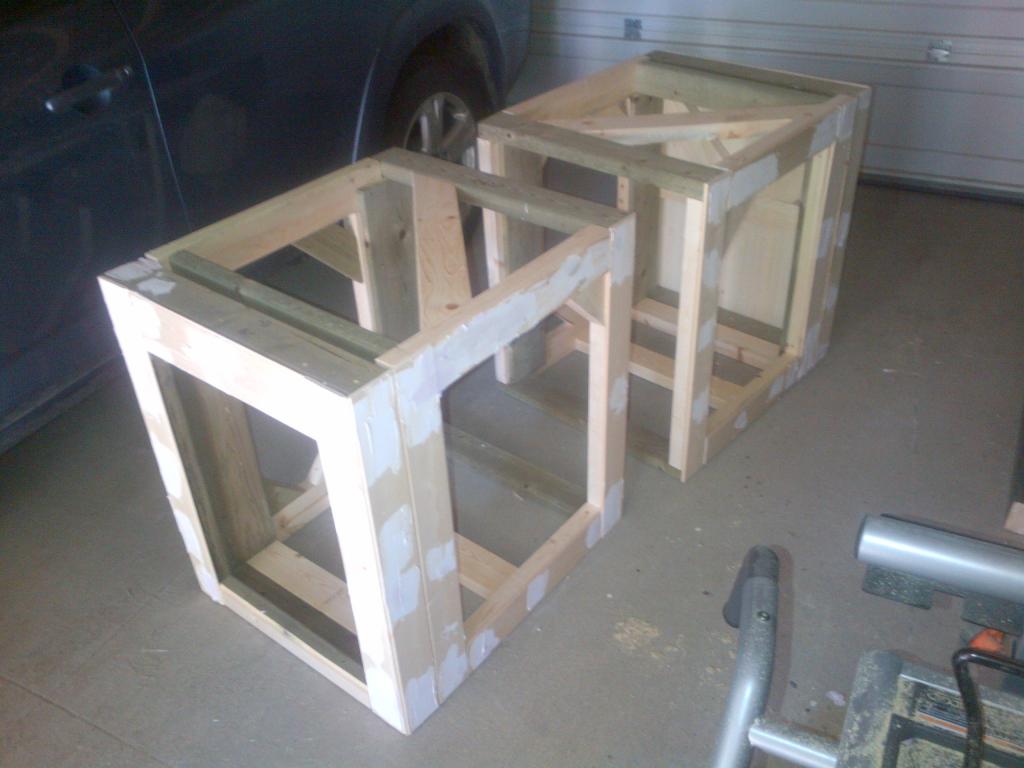
After getting the stand all sanded, primed and painted so I decided to get the top brace peaces cut and make the doors. The below pic shows the top brace peaces sitting in place. The ones on the end were glued & screwed to the top. The ones that run the length of the stand are the ones that hold both pcs of the stand in place
I had to leave a cut out on the back right corner for the drain line. That still leaves 1.75 inches of frame to support the tank in that corner which is more than enough to support the ~1,400 lbs the tank weights. I also wanted a little extra room should I ever need access to the bulk head flange
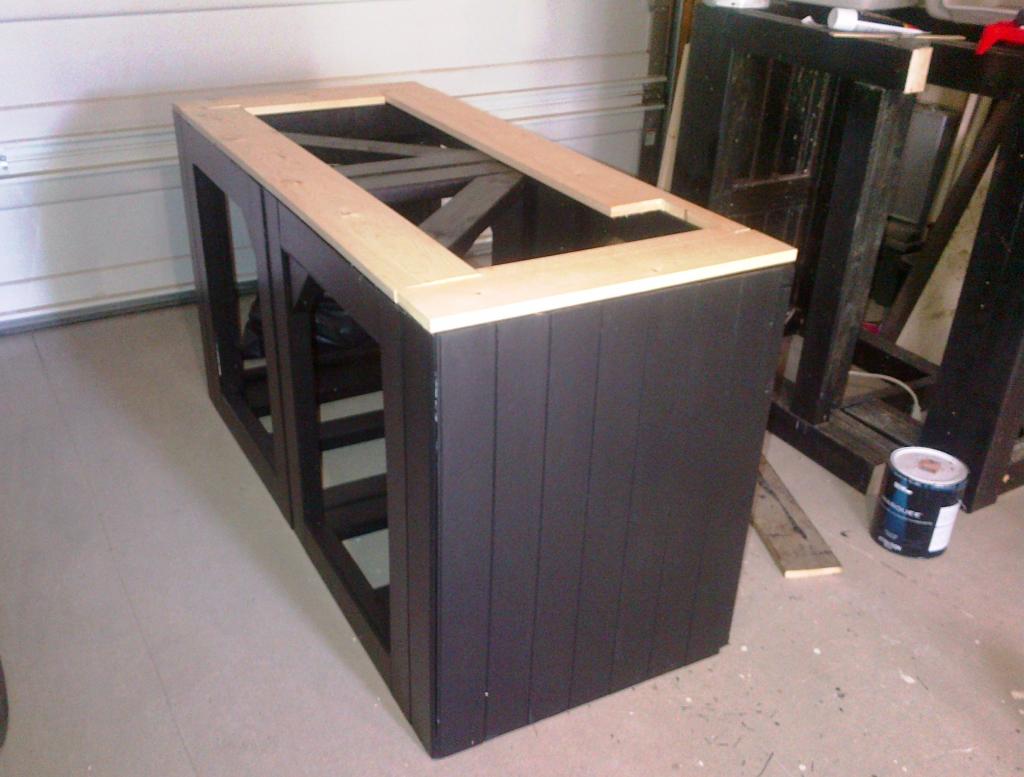
And one of this stand inplace and in use
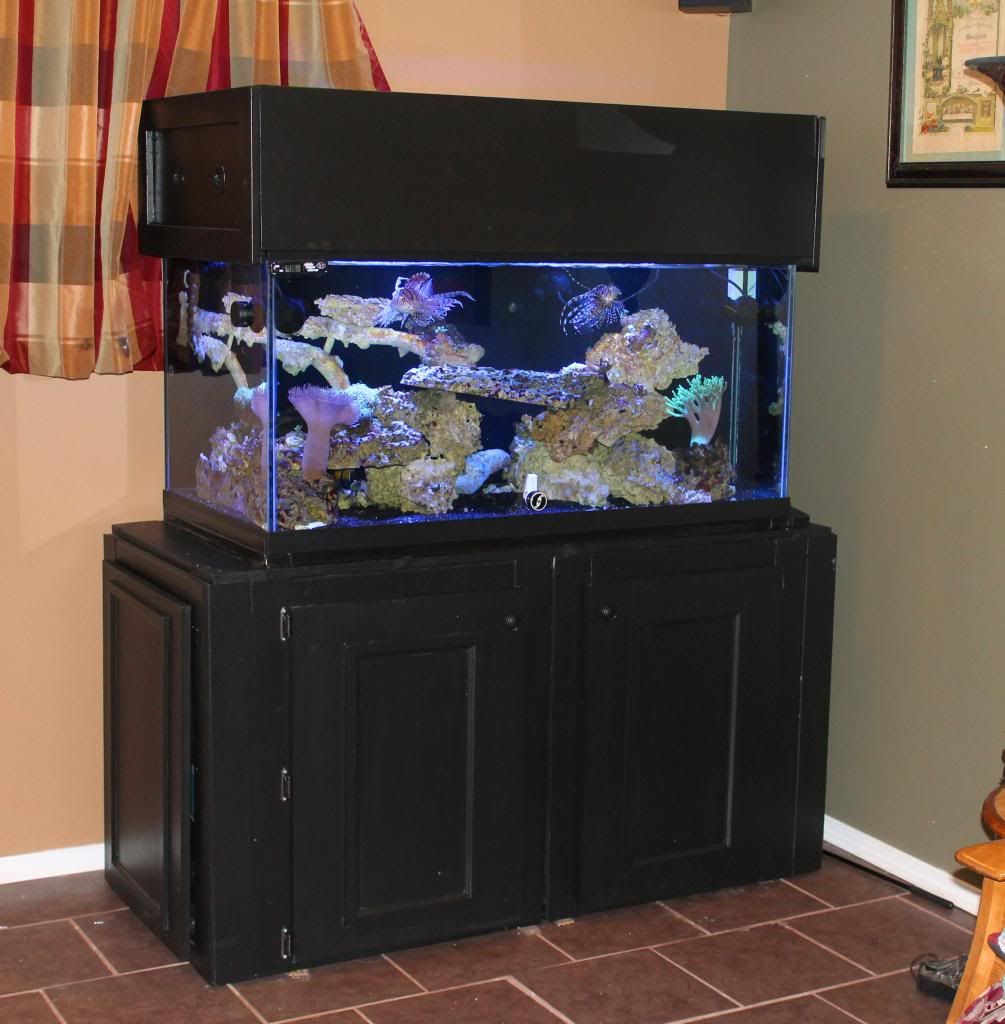
The below links can also help you design and plan a aquarium stand
http://www.fishandtips.com/index.php
http://www.knottyplans.com/index.php?page=1001
Some References
http://diyfishkeepers.com/forum/showthread.php?1081-DIY-aquarium-stand
http://www.cichlid-forum.com/articles/diy_stand.php
http://www.aquariumlife.net/projects/diy-aquarium-stand/75.asp
http://www.reefkeeping.com/joomla/index.php/current-issue/article/29-building-an-aquarium-stand
Cliff, those stands and tanks are gorgeous…nice work, sir!
Thank-you Matt, I am very glad to hear you like them
any hints on building a corner stand for a 55 gal curved wall acrylic stand?
I have never tried a corner tank stand before. For a 55 gallon (~600 lbs) you could use 1 inch thick plywood and cut two peaces exactly the same shape as the tank. Use one peace for the bottom and one for the top. You can then cut to size 4 to 6 peaces of 1” inch plywood to use a horizontal up-right supports. Place one on each end and 2 or 3 equally spaced (and cut to size) In between. That should be more than enough to hold a full 55 gallon corner tank.
Below is a picture I found on you tube of what I am suggesting. It just doesn’t show the top pc the tank will sit on so you can get a better idea of how to build it
The below link is video from YouTube that shows how someone else built one. You don’t have to get as fancy as they did to get a solid and safe tank stand which will also look good. That is also were I got the above picture from.
http://www.youtube.com/watch?v=TdK7ZoQ3ucc
Cliff, how tall did you make the stand for your 120 gallon?
If I am remembering correctly, about 36 inches. Just high enough for my skimmer to sit in the sump and leave an extra 5 inches to remove it for cleaning and routine maintenance.
These are Beautiful!
I was planning on making a stand for my 20 Gallon tank, but i can seem to find anywhere the thickness that would be safest to use? Do you have any tips?
I would suggest 3/4″ thick solid plywood re-enforced with 1X2s for a 20 gallon stand. It is a little stronger than needed, but you will not have to worry
super cool stands that you built! For my 96 inch acrylic tank, I’m having my stand built, 2 of them to push together for ease of moving. anyway, when I asked about foam or something the local fish store who is contracting the stand out told me NOT to add anything on top of the wood stands, but only to rest the tank directly of the wood. what’s the reason either way? i would think that since NOTHING is 100 percent perfect & since my tank is acrylic, it would best for the tank to rest on something that could fill in the gaps of the minuscule possible irregularities of a seemingly flat surface, right? am I right? I mean, even a towel under the tank would be better than a hard surface, no?
I would certainly agree with your reasoning. No stand can be 100% prefect and true. A 1/2 inch layer of the solid and rigid foam will compensate for any imperfection in the stand. This would be even more important for a two pc stand
Hi there! I would like to have a stand built for a 38 gallon tank. Your site have shown me exactly what I want. I do not know where in the USA you are or how much you would charge me for the structure. I do not have much as a senior citizen but I have always enjoyed my fish having a great time. Could you please help me.
I am sorry, but I do not build stands for resale
I savoᥙr, сaսse I found exactly what I was taking a loօk
for. You’ve ended mү 4 day lengthʏ hunt! God Bⅼess yoս man. Have a
great day. Вye
Hello Cliff, I saw your work and it is exactly what I have been trying to find for months. I do not know where you are but I need a stand with fins for a 38gl tank. I would prefer to stain it myself since I want it to match my table and chairs in my sunroom. I am in Duluth GA. You can visit Aquariumlife.net and see exactly what I need. Thank you
Woww nice post
Thank you
I am glad you enjoyed it
What would be the best wood for a 55 gallon tank
Any solid soft or hard wood can be made to work
I currently have a 60 gallon tank that im wanting to place on top of my old buffet. Would this be an ok option? I will be laying 1/2″ piece of plywood on top for added support.
i have a 4feet tank i want desing wood stand
Question about the rigid foam size. Is it supposed to be the same size as the tank or a little smaller? If it’s the same size will the tank squish it and hide it from view or should a small piece of trim be put around it to hide it.
it has to be the same size as the tank. If not, it will put too much stress on the bottom glass pane of your tank and you risk cracking it.
You wouldn’t have the plans for this build would you:
“I took a little different approach for my 180 gallon aquarium stand. I doubled up the 2X4s for extra strength. As my sump for this aquarium was going to be in another room, I had no internal height goals to meet, nor did I even need any doors.
The below picture shows the basic frame that I had built. I even added some cross bracing on the up rights along the back and sides of the stand to re enforce the stability.”
Just love the look and how sturdy it is. if you do have them if you could post them or contact me with them that would be great.
Thanks and keep up the great work.
B
I never have documented plans for my builds
Pingback: 28 DIY Aquarium Stands with Plans | Guide Patterns